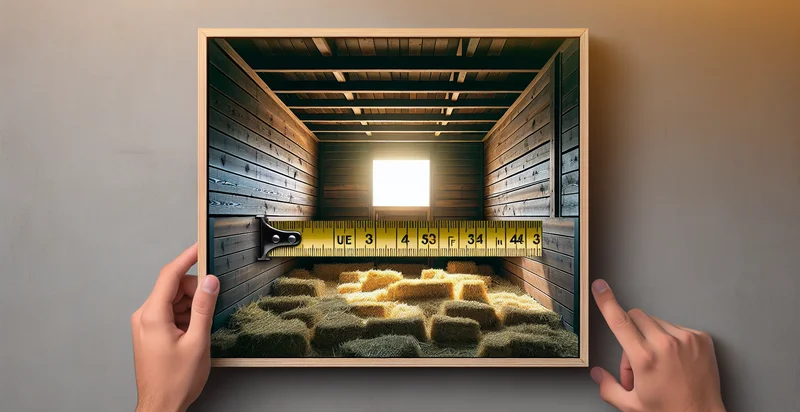Identify width of horse stall in feet
using AI
Below is a free classifier to identify width of horse stall in feet. Just upload your image, and our AI will predict the optimal width of a horse stall in feet. - in just seconds.

Contact us for API access
Or, use Nyckel to build highly-accurate custom classifiers in just minutes. No PhD required.
Get started
import nyckel
credentials = nyckel.Credentials("YOUR_CLIENT_ID", "YOUR_CLIENT_SECRET")
nyckel.invoke("width-of-horse-stall-in-feet", "your_image_url", credentials)
fetch('https://www.nyckel.com/v1/functions/width-of-horse-stall-in-feet/invoke', {
method: 'POST',
headers: {
'Authorization': 'Bearer ' + 'YOUR_BEARER_TOKEN',
'Content-Type': 'application/json',
},
body: JSON.stringify(
{"data": "your_image_url"}
)
})
.then(response => response.json())
.then(data => console.log(data));
curl -X POST \
-H "Content-Type: application/json" \
-H "Authorization: Bearer YOUR_BEARER_TOKEN" \
-d '{"data": "your_image_url"}' \
https://www.nyckel.com/v1/functions/width-of-horse-stall-in-feet/invoke
How this classifier works
To start, upload your image. Our AI tool will then predict the optimal width of a horse stall in feet..
This pretrained image model uses a Nyckel-created dataset and has 51 labels, including 1 Foot, 10 Feet, 11 Feet, 12 Feet, 13 Feet, 14 Feet, 15 Feet, 16 Feet, 17 Feet and 18 Feet.
We'll also show a confidence score (the higher the number, the more confident the AI model is around the optimal width of a horse stall in feet.).
Whether you're just curious or building width of horse stall in feet detection into your application, we hope our classifier proves helpful.
Related Classifiers
Need to identify width of horse stall in feet at scale?
Get API or Zapier access to this classifier for free. It's perfect for:
- Equine Facility Design: The width of horse stalls is a crucial factor in designing equine facilities. This function helps architects and facility planners ensure that stalls meet appropriate width standards for comfort and safety. By identifying false classifications, designers can make adjustments to their plans accordingly.
- Stable Management Software: In stable management systems, accurate data on stall dimensions can influence resource allocation and space management. This function can validate input dimensions, preventing costly errors in software dedicated to horse management. Thus, it enhances operational efficiency in equestrian facilities.
- Regulatory Compliance: Regulations around stall sizes can vary by location and facility type. This classification function can help stables ensure compliance with local regulations by providing real-time checks of stall dimensions against established standards. Non-compliance can lead to fines or required modifications, making accuracy essential.
- Animal Welfare Monitoring: Proper stall width is vital for the welfare of the horses, affecting their movement and health. This function can be used in monitoring systems that assess the living conditions of horses to ensure they are housed in appropriately sized stalls. This contributes to enhanced animal care protocols.
- Equine Health Assessments: Veterinarians can utilize this function to evaluate the physical environments of horses during health assessments. By confirming the dimensions of horse stalls, they can better assess potential stressors that may affect a horse's well-being. This can lead to improved health outcomes for the animals.
- E-commerce for Equestrian Gear: Online platforms selling equestrian supplies can use this function to ensure that products like stall fittings and accessories are correctly sized for various stall widths. This minimizes returns and increases customer satisfaction by helping buyers find compatible products. Accurate classification aids in enhancing user experience and reducing operational costs.
- Insurance Assessments: Insurance companies can leverage the width classification function when evaluating equine property risks. Accurate measurements can inform risk assessments and coverage terms, supporting fair premiums for horse owners. This function can improve underwriting accuracy and assist in claims processing when stall conditions are a factor.


